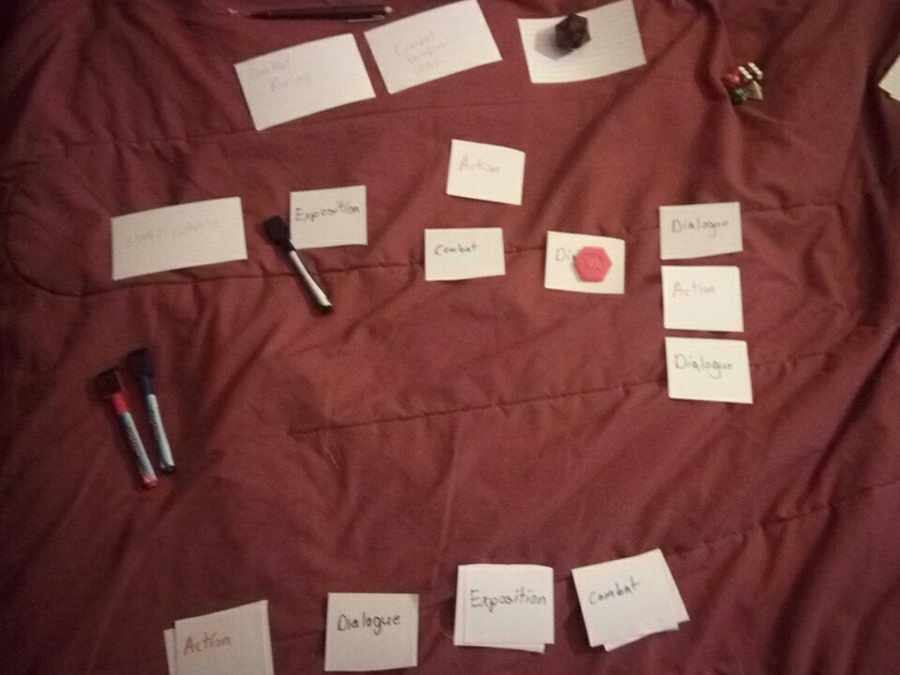This is a cross post from my blog about the development of my current game project. To follow its progress further and maybe look at some other art, head over to my blog https://xuelder.com.
Today, I want to talk about Narrative Design. As I am making this game in Twine, this is actually a very important aspect of this game, as most of the mechanics need to either complement or enhance the game’s narrative. For this purpose, I decided to look at nonlinear narrative design for Project Bonsai.
There are primarily two schools of thought on nonlinear design for narrative game design, Parallel and Branching Narrative. Both have their advantages and disadvantages that I had to look at for this first game’s design. Parallel narrative has the illusion of a branching story line, with little decisions only affecting small aspects of the story line. However, the overall story still hits certain beats, no matter what decisions you make. The advantage here is obvious, if you want to write a narrative with a clear message, but still give the player some agency, this is the clear way to go.
Although great for a more linear-like experience, the parallel narrative method has some distinct disadvantages. Most notably, a parallel narrative has really low replay value, especially if the choices are only a “cosmetic” change to the game. In Telltale’s games, for example, a decision between two actions may change which character helps you, but doesn’t change the outcome of the action. No matter what choices you make, you are still going toward a certain ending, if only with certain characters still in your “party.” In branching narrative though, the player’s action goes like a decision tree, hitting certain points that change the story’s outcome. This gives the player more agency in the story, as well as giving a better reason to replay a game, to see a different path in the game’s narrative. Unfortunately, this either leads to a longer dev cycle to write a narrative as long as the parallel narrative, or a shorter one to save time on development. Moreover, if your intention is to write a distinct plot with a certain message in the narrative, this can muddy the waters and take a lot more creative effort to do so.
With these in mind, I decided for Project Bonsai to the former method, branching narrative. Due to the mechanics I want to create, as well as a general idea of what I like in narrative games, for this first project I want to make a more standalone title. For this purpose, I think branching narrative is the way to go. Granted, there will not be many branches, and most will result in silly little fail/death states, but they will be there. If I was a little more ambitious, I would use a combination of the two, but I want this game to be released as soon as possible for my next project, which is an ongoing narrative game that I want to release monthly. This project is more about getting my feet wet again in game, narrative, and art design for future projects, and I want to keep it as nice and simple as possible.
I appreciate you all for reading this. If you want to support my game development, share this devlog on social media or give me a tip on Ko-fi. For more day to day updates on the game, follow me on twitter @Xuelder, and have a great day.

